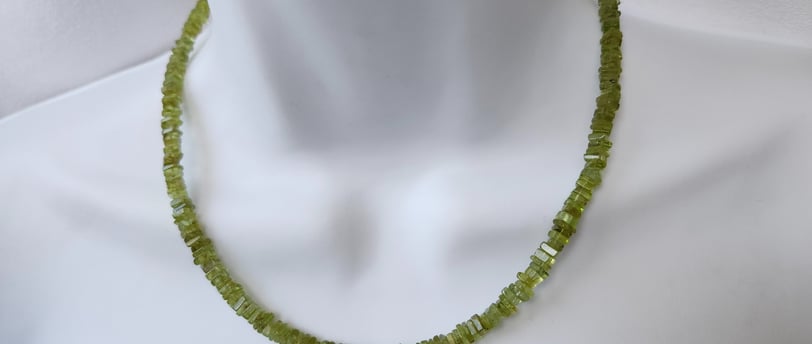The Fascinating World of Peridot
A Gem with Earthly and Extraterrestrial Origins


Peridot is a stunning gemstone best known for its vibrant yellow-green hue, which can range from pale to deep shades. Sometimes, it even appears as a greenish-brown. This gem is actually a variety of the mineral olivine, composed of magnesium and iron silicate. But beyond its beauty, peridot has an incredible story—one that spans from ancient history to space!
A Gemstone with Deep Roots in History
Peridot has fascinated people for centuries. The earliest known reference comes from the Roman writer Pliny the Elder in his famous work Natural History, written in 77 CE. He mentioned a gemstone called chrysolite, which was mined on an island in the Red Sea—today’s Zabargad Island in Egypt. This historic gem, often called the “gem of the sun,” is what we now know as peridot.
Even today, peridot remains a prized stone, gracing high-end jewelry collections. One remarkable example is a breathtaking Van Cleef & Arpels suite—featuring a necklace, bracelet, earrings, and ring—crafted from peridot mined in the Himalayas (Kane, 2004).
Peridot from Earth… and Beyond!
Most peridot comes from deep within the Earth’s mantle, found in volcanic lava and peridotite rocks (Koivula,1981). But what’s even more incredible is that peridot has also been discovered in meteorites! These extraterrestrial gems, known as pallasite peridots, are extremely rare and are often found in museum collections. Some, however, have been set into jewelry—making them some of the most unique and valuable adornments on Earth.
A study by the Gemological Institute of America analyzed 26 extraterrestrial peridot samples from the Esquel Pallasite meteorite alongside 27 earthly peridots. Scientists discovered key chemical differences between them, using elements like vanadium, lithium, manganese, cobalt, nickel, and zinc to distinguish peridots from space versus those from Earth (Shen, Koivula, Shigley, 2011).
More Than Just a Beautiful Stone
Peridot has long been believed to hold special powers. It is the birthstone for August and has been associated with protection, healing, and even magical properties. Throughout history, people have admired gemstones for their beauty and mystery—whether they are set in simple jewelry or displayed as rare museum artifacts.
So whether you’re drawn to Peridot for its dazzling colour, its ancient history, or even its cosmic connections, this gemstone has a truly extraordinary story to tell!
Bibliography
Hurlbut, Cornelius S., Switzer, S. George, Gemology, New York-Toronto, 1979
Kane, Robert E., The creation of a Magnificent Suite of Peridot Jewelry: From the Himalayas to Fifth Avenue, In: Gem&Gemology, Winter 2004, Volume 40, No4 (access free article)
Koivula, I. John, San Carlos Peridot, In: Gems and Gemology, Winter 1981, Volume 17, No. 4 (access free article)
Kunz George Fridrich, The curious lore of precious stones, New York, 1971
O’Donoghue Michael (ed.) Gems, Amsterdam-Tokyo 2006
Pline l’Ancien, Histoire Naturelle, Livre XXXVII, (VIII.32), texte traduit et commenté par E. de Saint-Denis, Paris 2003
Shen Andy H., Koivula, I. John and Shigley, E. James: Identification of Extraterrestrial Peridot by Trace Elements, in: Gem&Gemology, Fall 2011, Volume 47, No3. (access free article)
PS. As always, even this is not particularly cited, we consulted the notes book Gemmology, Gem-A, The Gemmological Association of Great Britain, London, 2009.
